#pablos herreros
Text
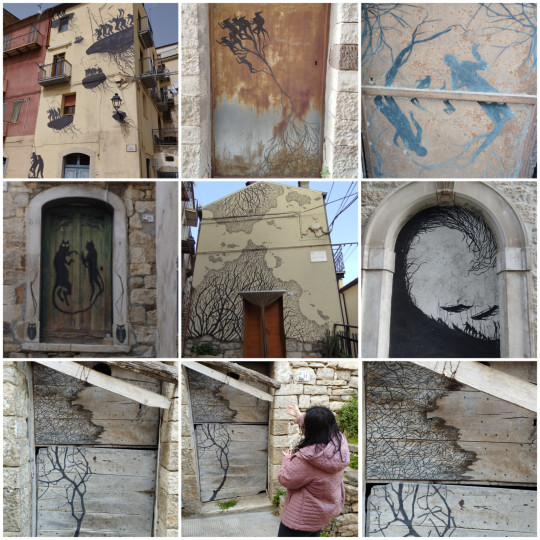
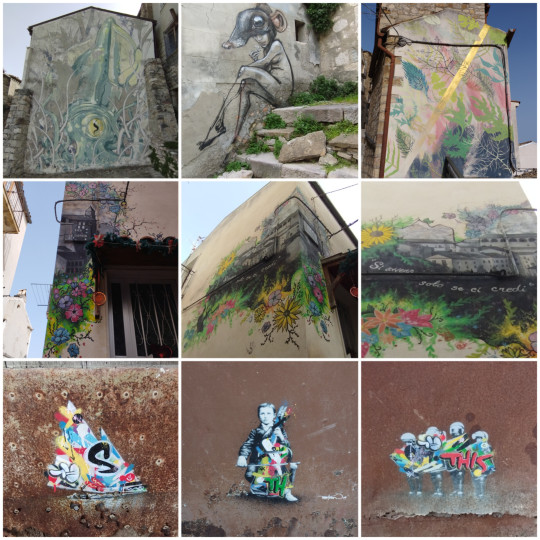
David De La Mano, Pablo S. Herrero, Hitnes, HERA, Gola Hundun, Airelav, Martin Whatson - Civitacampomarano
#pensieri per la testa#persa tra i miei pensieri#fotografia#foto#scatto fotografico#reportage fotografico#murales#david de la mano#herrero#civitacampomarano#molise#natura#alberi#albero#pablo herrero#gola Hundun#hera#martin whatson#hitnes#Airelav
2 notes
·
View notes
Text
#Spotify#Un Beso Y Una Flor#Nino Bravo#Ibarz Pablo Herrero#Jose Luis Armenteros Sanchez#Augusto Alguero#Universal Music Spain S.L.#Pop#Maryni Callejo#J.L. Armenteros#José Torregrosa#Juan Hidalgo
0 notes
Text
youtube
Y un pequeño tributo también a Pablo Herrero, mitad compositiva junto a José Luis Herreros de Los Relámpagos y coautor con él de grandes éxitos del pop español tales como "Cuéntame", "Tengo Tu Amor", "América", "Libre" o "La Estrella de David", entre muchísimas otras en una lista de créditos impresionante. Le recordamos con dos curiosidades que no definen al famoso grupo instrumental: "Bwana", en la onda Booker T. & The MG´s, el último single que grabaron para Zafiro- Novola en 1968, y la cara B del primer sencillo para el sello RCA en 1969, "Ferrocarril de Montaña", ésta un poco Tornados.
youtube
0 notes
Text
If Stonemasons Could Talk
What would they say? From hand chiseling blocks of stone to shaping, polishing and leveling stones with the use of a wide range of sophisticated power tools, these unsung heroes have been romancing the stone since the ancient times, contributing to the development of historic and modern structures. David de la Mano and Pablo S. Herrero pay tribute to these anonymous wizards by giving them a…

View On WordPress
0 notes
Text
La Orquesta Escuela de Berisso se presentó en el Teatro Argentino
#Cultura | La #OrquestaEscuela de #Berisso se presentó en el #TeatroArgentino
El pasado viernes, la formación inicial de la Orquesta Escuela de Berisso se presentó en las escalinatas del Teatro Argentino de La Plata con la propuesta “Payadores y Raperos Sinfónicos”.
El espectáculo de acceso libre y gratuito fue organizado de manera conjunta entre el Municipio de Berisso, la Asociación Civil “Orquestar” y el Instituto Cultural de la provincia de Buenos Aires.En el encuentro…

View On WordPress
#Asociación Civil Orquestar#Axel Kicillof#Beatriz &8220;Teté&8221; Grasso#Berisso#cultura#David Tokar#Emanuel Gabotto#Eva Piermaría#Fabián Cagliardi#Florencia Saintout#Instituto Cultural#Juan Carlos Herrero#Juan Pablo Holubyez#La Plata#Lujo Mc#Mustafá Yoda#Orquesta Escuela#Orquesta Escuela de Berisso#Teatro Argentino#Underdann
0 notes
Text
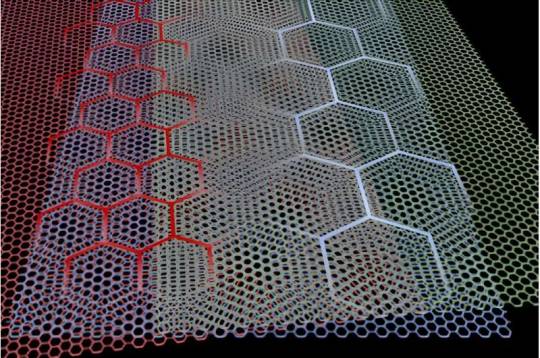
Physicists coax superconductivity and more from quasicrystals
In research that could jumpstart interest into an enigmatic class of materials known as quasicrystals, MIT scientists and colleagues have discovered a relatively simple, flexible way to create new atomically thin versions that can be tuned for important phenomena. In work reported in Nature they describe doing just that to make the materials exhibit superconductivity and more.
The research introduces a new platform for not only learning more about quasicrystals, but also exploring exotic phenomena that can be hard to study but could lead to important applications and new physics. For example, a better understanding of superconductivity, in which electrons pass through a material with no resistance, could allow much more efficient electronic devices.
The work brings together two previously unconnected fields: quasicrystals and twistronics. The latter was pioneered at MIT only about five years ago by Pablo Jarillo-Herrero, the Cecil and Ida Green Professor of Physics at MIT and corresponding author of the paper.
Read more.
23 notes
·
View notes
Text
Jeong Min Park earns 2024 Schmidt Science Fellowship
New Post has been published on https://sunalei.org/news/jeong-min-park-earns-2024-schmidt-science-fellowship/
Jeong Min Park earns 2024 Schmidt Science Fellowship

Physics graduate student Jeong Min (Jane) Park is among the 32 exceptional early-career scientists worldwide chosen to receive the prestigious 2024 Schmidt Science Fellows award.
As a 2024 Schmidt Science Fellow, Park’s postdoctoral work will seek to directly detect phases that could host new particles by employing an instrument that can visualize subatomic-scale phenomena.
With her advisor, Pablo Jarillo-Herrero, the Cecil and Ida Green Professor of Physics, Park’s research at MIT focuses on discovering novel quantum phases of matter.
“When there are many electrons in a material, their interactions can lead to collective behaviors that are not expected from individual particles, known as emergent phenomena,” explains Park. “One example is superconductivity, where interacting electrons combine together as a pair at low temperatures to conduct electricity without energy loss.”
During her PhD studies, she has investigated novel types of superconductivity by designing new materials with targeted interactions and topology. In particular, she used graphene, atomically thin two-dimensional layers of graphite, the same material as pencil lead, and turned it into a “magic” material. This so-called magic-angle twisted trilayer graphene provided an extraordinarily strong form of superconductivity that is robust under high magnetic fields. Later, she found a whole “magic family” of these materials, elucidating the key mechanisms behind superconductivity and interaction-driven phenomena. These results have provided a new platform to study emergent phenomena in two dimensions, which can lead to innovations in electronics and quantum technology.
Park says she is looking forward to her postdoctoral studies with Princeton University physics professor Ali Yazdani’s lab.
“I’m excited about the idea of discovering and studying new quantum phenomena that could further the understanding of fundamental physics,” says Park. “Having explored interaction-driven phenomena through the design of new materials, I’m now aiming to broaden my perspective and expertise to address a different kind of question, by combining my background in material design with the sophisticated local-scale measurements that I will adopt during my postdoc.”
She explains that elementary particles are classified as either bosons or fermions, with contrasting behaviors upon interchanging two identical particles, referred to as exchange statistics; bosons remain unchanged, while fermions acquire a minus sign in their quantum wavefunction.
Theories predict the existence of fundamentally different particles known as non-abelian anyons, whose wavefunctions braid upon particle exchange. Such a braiding process can be used to encode and store information, potentially opening the door to fault-tolerant quantum computing in the future.
Since 2018, this prestigious postdoctoral program has sought to break down silos among scientific fields to solve the world’s biggest challenges and support future leaders in STEM.
Schmidt Science Fellows, an initiative of Schmidt Sciences, delivered in partnership with the Rhodes Trust, identifies, develops, and amplifies the next generation of science leaders, by building a community of scientists and supporters of interdisciplinary science and leveraging this network to drive sector-wide change. The 2024 fellows consist of 17 nationalities across North America, Europe, and Asia.
Nominated candidates undergo a rigorous selection process that includes a paper-based academic review with panels of experts in their home disciplines and final interviews with panels, including senior representatives from across many scientific disciplines and different business sectors.
0 notes
Text
Jeong Min Park earns 2024 Schmidt Science Fellowship
New Post has been published on https://thedigitalinsider.com/jeong-min-park-earns-2024-schmidt-science-fellowship/
Jeong Min Park earns 2024 Schmidt Science Fellowship
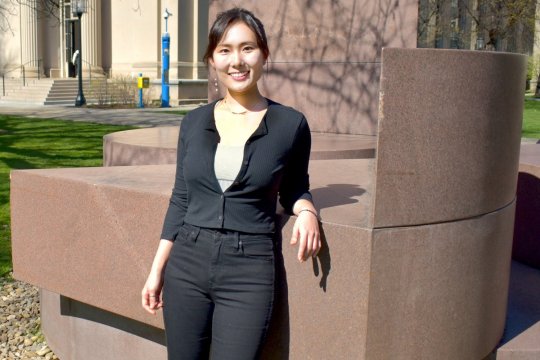

Physics graduate student Jeong Min (Jane) Park is among the 32 exceptional early-career scientists worldwide chosen to receive the prestigious 2024 Schmidt Science Fellows award.
As a 2024 Schmidt Science Fellow, Park’s postdoctoral work will seek to directly detect phases that could host new particles by employing an instrument that can visualize subatomic-scale phenomena.
With her advisor, Pablo Jarillo-Herrero, the Cecil and Ida Green Professor of Physics, Park’s research at MIT focuses on discovering novel quantum phases of matter.
“When there are many electrons in a material, their interactions can lead to collective behaviors that are not expected from individual particles, known as emergent phenomena,” explains Park. “One example is superconductivity, where interacting electrons combine together as a pair at low temperatures to conduct electricity without energy loss.”
During her PhD studies, she has investigated novel types of superconductivity by designing new materials with targeted interactions and topology. In particular, she used graphene, atomically thin two-dimensional layers of graphite, the same material as pencil lead, and turned it into a “magic” material. This so-called magic-angle twisted trilayer graphene provided an extraordinarily strong form of superconductivity that is robust under high magnetic fields. Later, she found a whole “magic family” of these materials, elucidating the key mechanisms behind superconductivity and interaction-driven phenomena. These results have provided a new platform to study emergent phenomena in two dimensions, which can lead to innovations in electronics and quantum technology.
Park says she is looking forward to her postdoctoral studies with Princeton University physics professor Ali Yazdani’s lab.
“I’m excited about the idea of discovering and studying new quantum phenomena that could further the understanding of fundamental physics,” says Park. “Having explored interaction-driven phenomena through the design of new materials, I’m now aiming to broaden my perspective and expertise to address a different kind of question, by combining my background in material design with the sophisticated local-scale measurements that I will adopt during my postdoc.”
She explains that elementary particles are classified as either bosons or fermions, with contrasting behaviors upon interchanging two identical particles, referred to as exchange statistics; bosons remain unchanged, while fermions acquire a minus sign in their quantum wavefunction.
Theories predict the existence of fundamentally different particles known as non-abelian anyons, whose wavefunctions braid upon particle exchange. Such a braiding process can be used to encode and store information, potentially opening the door to fault-tolerant quantum computing in the future.
Since 2018, this prestigious postdoctoral program has sought to break down silos among scientific fields to solve the world’s biggest challenges and support future leaders in STEM.
Schmidt Science Fellows, an initiative of Schmidt Sciences, delivered in partnership with the Rhodes Trust, identifies, develops, and amplifies the next generation of science leaders, by building a community of scientists and supporters of interdisciplinary science and leveraging this network to drive sector-wide change. The 2024 fellows consist of 17 nationalities across North America, Europe, and Asia.
Nominated candidates undergo a rigorous selection process that includes a paper-based academic review with panels of experts in their home disciplines and final interviews with panels, including senior representatives from across many scientific disciplines and different business sectors.
#2024#America#Asia#Awards#honors and fellowships#background#Building#Business#Carbon materials#career#change#Collective#Community#computing#Design#dimensions#electricity#Electronics#electrons#energy#Europe#Fault-tolerant quantum computing#form#Fundamental#Future#Graduate#postdoctoral#graphene#graphite#green
1 note
·
View note
Text
Municipio recibió una potencia, consola, compactera y luces de parte GRISU
Este jueves la Municipalidad de Bariloche recibió una donación de una reconocida discoteca de la ciudad, quien aportó varios elementos que se utilizarán en distintos eventos.
Según explicó el secretario de Turismo municipal, Sergio Herrero, la donación llego de manos de Pablo Vidal, propietario de Grisú, y estuvo presente el intendente Walter Cortés.
De esta manera, el Municipio recibió una…
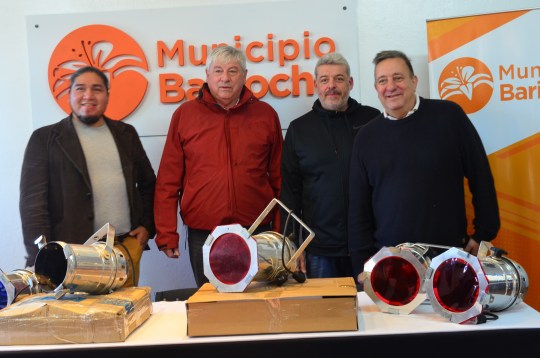
View On WordPress
0 notes
Text
Il nuovo strano comportamento degli elettroni entusiasma i fisici
Scoperta rivoluzionaria: comportamento insolito degli elettroni Due gruppi di ricerca hanno recentemente osservato che gli elettroni possono presentare comportamenti con cariche frazionarie, senza l’influenza di campi magnetici esterni. Questa scoperta, denominata “effetto Hall anomalo quantistico frazionario”, potrebbe avere implicazioni significative nella fisica quantistica e nello sviluppo di computer quantistici. Implicazioni pratiche ed entusiasmo scientifico La capacità degli elettroni di assumere cariche non convenzionali potrebbe aprire nuove frontiere nella ricerca e nell’applicazione della fisica quantistica. Questa scoperta ha suscitato grande entusiasmo tra la comunità scientifica, con il fisico Pablo Jarillo-Herrero che esprime ottimismo sulle potenziali applicazioni future di questa nuova comprensione.
0 notes
Text
Crean un transistor similar a un cerebro capaz de ‘pensar’ a un nivel superior
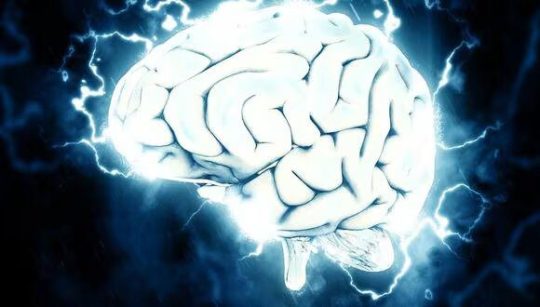
El dispositivo va más allá de las simples tareas de aprendizaje automático para categorizar datos, y es capaz de realizar un aprendizaje asociativo.
Inspirándose en el cerebro humano, un equipo científico ha desarrollado un nuevo transistor sináptico capaz de ‘pensar’ a un nivel superior; el dispositivo puede procesar y almacenar información simultáneamente, igual que nuestro cerebro.
La descripción del transistor que trata de imitar la inteligencia humana y que funciona a temperatura ambiente se publica en la revista Nature, en un artículo en el que los investigadores demuestran que el dispositivo va más allá de las simples tareas de aprendizaje automático para categorizar datos, y es capaz de realizar un aprendizaje asociativo.
Aunque estudios anteriores han aprovechado estrategias similares para desarrollar dispositivos informáticos parecidos al cerebro, esos transistores no pueden funcionar fuera de temperaturas criogénicas.
El nuevo modelo, en cambio, es estable a temperatura ambiente y además funciona a gran velocidad, consume muy poca energía y conserva la información almacenada incluso cuando se le retira la alimentación, “lo que lo hace ideal para aplicaciones del mundo real”.
La investigación está codirigida por Mark C. Hersam, de la Universidad de Northwestern, y por el español Pablo Jarillo-Herrero, del Instituto Tecnológico de Massachusetts (MIT).
Los recientes avances en inteligencia artificial (IA) han motivado a los investigadores a desarrollar ordenadores que funcionen de forma más parecida al cerebro humano, recuerda un comunicado de Northwestern.
Durante varias décadas, apunta Hersam, el paradigma de la electrónica ha sido construirlo todo con transistores -semiconductores que rectifican y amplifican impulsos eléctricos- y utilizar la misma arquitectura de silicio.
“Se ha avanzado mucho simplemente introduciendo más y más transistores en los circuitos integrados. No se puede negar el éxito de esa estrategia, pero tiene el coste de un elevado consumo de energía, especialmente en la actual era de los grandes datos en la que la informática digital va camino de desbordar la red”.
Por eso, hay que replantearse “el hardware informático, especialmente para tareas de IA y aprendizaje automático”.
Los sistemas informáticos digitales convencionales tienen unidades de procesamiento y almacenamiento separadas, lo que precisamente hace que las tareas intensivas en datos devoren grandes cantidades de energía.
En cambio en el cerebro, explica Hersam, la memoria y el procesamiento de la información están ubicados en el mismo lugar y totalmente integrados, lo que se traduce en una eficiencia energética de órdenes de magnitud superiores. “Nuestro transistor sináptico logra de forma similar la funcionalidad concurrente de memoria y procesamiento de la información para imitar más fielmente al cerebro”.
Para lograrlo, el equipo exploró la física de los patrones de moiré, un tipo de diseño geométrico que surge cuando dos patrones se superponen en capas, y combinó dos tipos diferentes de materiales atómicamente finos: el grafeno bicapa y el nitruro de boro hexagonal.
Cuando se apilan materiales bidimensionales -como el grafeno-, surgen nuevas propiedades que no existen en una sola capa y cuando esas capas se retuercen para formar el efecto moiré es posible una sintonización sin precedentes de las propiedades electrónicas.
Así, al girar una capa con respecto a la otra, los investigadores lograron propiedades electrónicas diferentes en cada capa de grafeno, aunque solo estuvieran separadas por dimensiones a escala atómica.
“Con la torsión como nuevo parámetro de diseño, el número de permutaciones es enorme”, afirma Hersam. “El grafeno y el nitruro de boro hexagonal son muy similares estructuralmente, pero lo suficientemente diferentes como para obtener efectos moiré excepcionalmente potentes”, añade.
Para probar el transistor, el equipo lo entrenó para reconocer patrones similares, pero no idénticos.
En primer lugar, mostró al dispositivo el patrón 000 y a continuación pidió a la IA que identificara patrones similares, como 111 o 101.
“Si lo entrenamos para detectar 000 y luego le damos 111 y 101, sabe que 111 es más parecido a 000 que 101″, subraya Hersam, para quien reconocer esa similitud es una forma superior de cognición conocida como aprendizaje asociativo.
https://ntv365.com/ciencia-y-tecnologia/el-invento-que-retirara-el-aire-acondicionado-enfriara-la-casa-hasta-15-grados/
Read the full article
0 notes
Text
Muere el compositor Pablo Herrero, coautor de 'Libertad sin ira', 'Eva Maria' o 'Un beso y una flor'
El compositor y letrista Pablo Herrero (Madrid, 1942), coautor de conocidos temas como ‘Libertad sin ira’, ‘Como una ola’, ‘Eva María’ o ‘Un beso y una flor’ ha fallecido este martes, según ha informado la SGAE, entidad de la que fue vicepresidente y en la que tenía registradas casi 800 obras.
Pablo Herrero fue autor de “un repertorio esencial de la música española” y deja un “imprescindible…
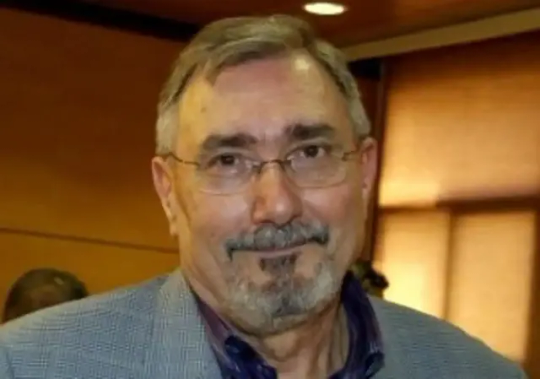
View On WordPress
0 notes
Link
0 notes

